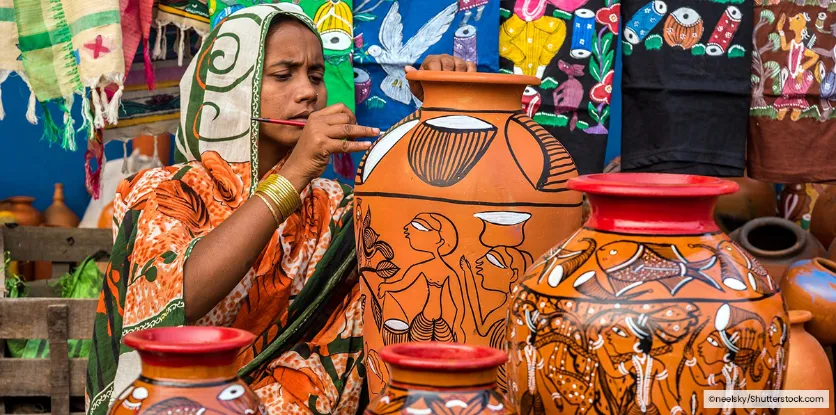India’s local craft culture is the elegantly blended result of ages under historically significant empires. Since the Iron Age, local arts and crafts have gained popularity and value. Any culture or society’s history is constructed on the foundation of earlier crafts, traditional arts, and religious texts. Because it is the only archaeological artifact and record of the values left by the ancestors for their subsequent generations.
The Craft as it is done today takes place in a quick-paced, competitive, capitalistic context where machine-based industries have tried their best to replace local artists and their Craft. However, the crafts have managed to survive thanks to their unrivaled quality, authenticity, and hours of labor from artisans.
The Downfall Of Artisanal Culture
A machine is only as good as its maker, but a piece of art is as good as the eye of the beholder. Only a true artisan can provide unique quality and creativity and integrate this into every piece that he or she makes.
But unfortunately, the world is moving towards a technological shift and is vastly ignoring the past and the culture-rich history it has to offer. Local arts and crafts are finding it harder and harder to survive in today’s fast-paced, competitive environment.
People prefer affordable, quick, machine-polished, and contemporary aesthetics over traditional crafts, because handmade items need more time and hence cost more than machine-produced goods. The majority of local craftspeople must stop producing their goods as a result of industrialization.
The Importance Of Preserving Culture
In a country like India, where culture is valued and thought of so highly, it becomes important for the people residing in such a country to go out of their way to preserve these connections to their roots. It is blatantly rude to demonstrate cultural ignorance by undervaluing the regional crafts that helped raise us.
The indigenous handicrafts serve as a reminder of the diverse culture and customs that India has always had, helping to maintain them for future generations. Due to government initiatives, people are now aware of the importance of preserving regional crafts.
Hence, it becomes imperative to encourage people to “vocalize for local” by supporting local craftsmen by purchasing their handcrafted goods from them. And more significantly, to be aware of the government-instituted schemes and programs to promote local artisans and their crafts.
How Can You Be “Vocal For Local”?
The best way we can show our support at the base level is by essentially speaking up for local artisans in our daily lives. This will benefit artists and their crafts, but it will also benefit India as a whole in maintaining its rich cultural history.


